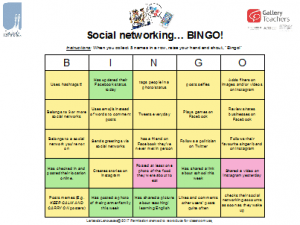Recently teenagers have been accused of being unable to socialise face to face, think and even make eye contact. Parents and adults in general put the blame for the lack of communicative skills among teenagers on social media.
However, new technologies have always provoked generational panic, which usually has more to do with adult fears than with the lives of teenagers themselves.
Actually, a recent study has found that the most avid texters are also the kids most likely to spend time with friends in person. It seems clear that one form of socialising doesn’t replace the other. Moreover, social scientists who study young people have found that their digital use can be inventive and even beneficial. This is true not just in terms of their social lives, but their education too. In fact, thanks to the online world, young people can now publish ideas not just to their friends, but to the world. And by writing for strangers, their sense of “authentic audience” makes them work harder, push themselves further, and create powerful new communicative forms.
 Instead of blaming teenage students for their “bad habit” why don’t we use it to make them improve their EFL skills?
Instead of blaming teenage students for their “bad habit” why don’t we use it to make them improve their EFL skills?
Over the last few years I have been creating and adapting several activities which involve the use – practical or not – of social networking apps. In the activity below students get to know each other by asking questions about their use of social networking apps. I use it on the first day of my classes with teen students to let them mingle and break the ice.
TARGET LANGUAGE:
Ask and answer questions using present simple, past simple and present perfect simple (they are distinguished by different colours on the cards).
RULES OF THE GAME
- Distribute the cards and pens or pencils to each student.
- Tell the players that they must interview each other. Have each player go around the group and ask other students yes/no questions.
- If the student answers “no”, they need to move on. If the student answers “yes”, they write down their name and then they move on to another student for another question.
- If you see students asking more than one question to the same person, you can clap your hands or use a whistle to make them move on.
- The student who first collects 5 names in a row, raises his or her hand and shouts, “Bingo!”
It is important that you show an example with one of the students because the focus on target language is to ask you-questions but on the cards they will find the third person singular.
E.g. Maria: Do you use hashtags?
Simone: Yes, I do
Now Maria can write Simone on the card. E.g. Simone uses hashtags.




